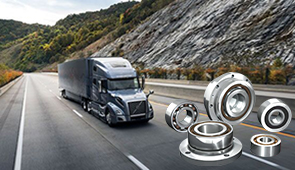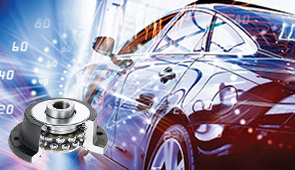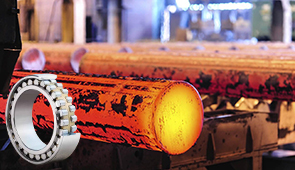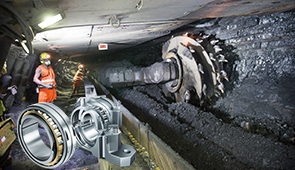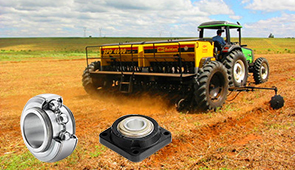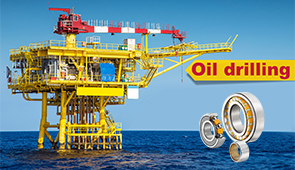The Ultimate Guide to Rod End Bearing: Understanding Ball Joints and More
Rod end bearings, commonly referred to as ball joints, are critical components in a wide range of mechanical systems. From automotive steering mechanisms to industrial machinery and aerospace applications, these versatile elements play a pivotal role in ensuring controlled movement and stability. However, understanding their structure, function, and the various types available can seem daunting due to their technical nature and diverse applications. This comprehensive guide is designed to demystify rod end bearings for professionals and enthusiasts alike, breaking down their components, highlighting their uses, and offering key insights into selecting the right type for specific needs. Whether you’re a seasoned engineer or a curious learner, this article will equip you with the knowledge to optimize performance and make informed decisions when it comes to these essential mechanical links.
What is a Product Rod End Bearing?
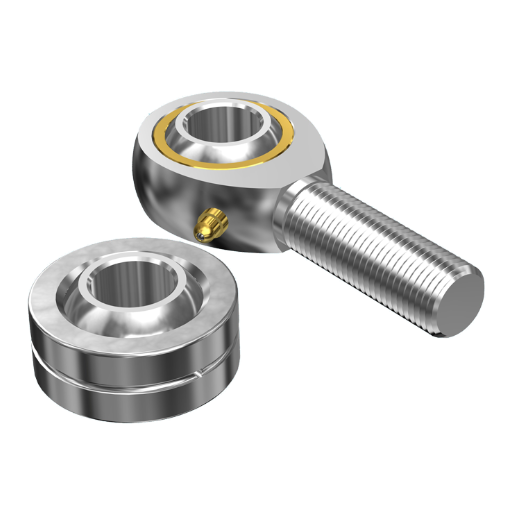
Understanding the Basics of a Rod End Bearing
A rod end bearing, also known as a heim joint or rose joint, is an example of a mechanical part that has a connection interface that allows for rotational, oscillatory, or angular movements. It is usually made of a spherical bearing set in a housing that permits movement in multiple axes while still keeping parts joined. This kind of movement capability is crucial for rod end bearings in scenarios where a change of alignment or movement in several planes is necessary.
A rod end bearing primarily serves the purpose of sustaining and transmitting load while enabling angular misalignment of components that are physically coupled together. Precise and durable components are most commonly found in automotive steering mechanisms, industrial machines, and aerospace controls, which require working with automation. Depending on the specific needs of the application, rod end bearings may come with male or female threads on the shank for simple attachment. Materials of construction often vary from stainless steel, which is preferred for its corrosion resistance, to other alloys where reduced mass is critical.
Load capacity, operational angle, environmental conditions, and lubrication requirements are some of the factors to consider when choosing rod end bearings. Applications with extreme loads and environments prefer high-strength materials and sealed designs because they ensure performance and longevity. Furthermore, manufacturers offer different configurations to meet particular requirements, highlighting the need to balance durability, weight, cost, and other factors during selection.
Components of a Ball Joint in Rod End Bearings
The fundamental parts of a rod end bearing’s ball joint include the spherical inner ring, outer housing, and bearing surface, and their proper arrangement is essential for the proper functioning of the device. Each performs a specific function towards the optimization of movement, load handling capability, and other performance indicators of the assembly.
The primary component, a rotating element, is the spherical inner ring with a precisely machined spherical surface, which makes guiding and allowing motion while minimizing friction possible. The ring’s flexibility and articulation provide friction reduction in mechanical linkage parts of machinery further down the line.
Ball joints require structural support and coverage, which is provided by the strong Steel or aluminum Outer housing. Furthermore, the sealing aspects of the bearing protect the joints from exposure to soil, water, and waste, greatly enhancing the lifespan and reliability of the machinery in extreme environments.
At the last stage, the bearing surface or the liner that interfaces with the inner ring and the outer housing is implemented to reduce friction and wear. Depending on the load and durability requirements, this component may be made of PTFE, bronze, or other composite polymers. The liner serves to guarantee performance at low maintenance levels and avoid metal-to-metal contact that can damage the components over an extended period.
These parts act together to deliver the required strength, flexibility, and reliability needed across a large spectrum of industrial applications, including automotive and aerospace systems.
How Does a Spherical Rod End Work?
A spherical rod end functions by permitting the relative rotational and angular movement of two or more mechanized parts as a consequence of its distinct construction that comprises a spherical inner ring, which is placed inside an outer body or a housing. The inner ring can be rotated about its spherical surface within the housing, which allows inner alignment to take place and smooth force transmission in all housing directions.
The spherical rod end is mainly characterized by the presence of the rod end sphere joint, acting similarly to a ball-and-socket joint. The applied load will cause the spherical ball to also move relative to the housing and will strain the entire component uniformly. This arrangement prevents stress concentration and neutralization in binding and motions of high load or rotation angle is applied. Those enabled responsive radial and axial load demands of the rod end enable it to respond mount of dynamic multi-directional forces flexibly.
Examples of products that are fitted with spherical rod ends include steering systems, control elements, and linkage elements that are integrated within mechanized structures. They serve by enabling the component to work accurately while simultaneously guarding against misalignment failure of movement within brackets, in addition to use incidents.
How to Shop for the Best Rod End Bearings?
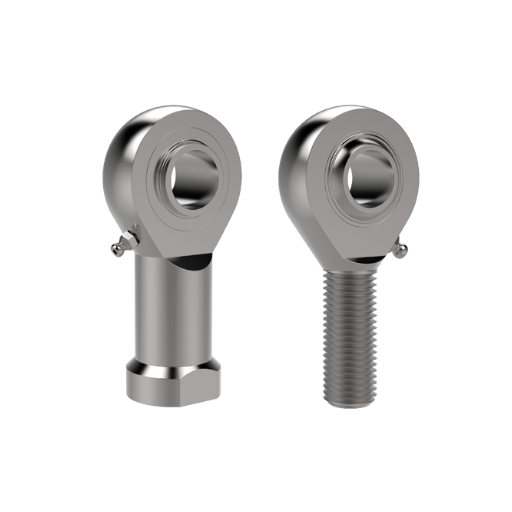
Factors to Consider When Selecting a Rod End Product
If you want to get the most out of a rod end bearing, you need to consider a multitude of factors such as compatibility, reliability, and other essential factors. Here’s a concise list to help you get started with choosing the perfect rod end bearing:
- Load Capacity: Ensure you evaluate the static and dynamic load ratings. These ratings are the maximum amount of load the rod end bearing can withstand without causing damage. It is important to take into account radial, axial, and combined loads to ensure your application needs are met.
- Material Selection: For both the housing and spherical inner ring of the rod end bearing, the materials need to fit well with the operating environment. High-corrosion environments require stainless steel or chrome-plated steel. For applications of reduced demand, standard carbon steel is a good option. These materials also include reinforced polymers for lighter materials.
- Operating Environment: Look at the encompassing conditions such as temperature ranges, dust, chemicals, moisture, and vibration. Chemically aggressive environments or extreme temperature settings require specialized lubrication or tailored corrosion-resistant coating.
- Thread Type and Size: Pick the suitable thread size and type, followed by the mounting requirements, either metric or imperial. Ensure that the direction of the thread, right-hand or left-hand, works well with the design of the skeletal components for optimal performance.
- Angular Misalignment Capacity: The angular misalignment capacity of the rod end is particularly important for a bearing’s ability to withstand internal structural changes without loss of function. A certain product is advisable that offers appropriate alignment variations for comfort alignment discrepancies.
- Bearing Lubrication and Maintenance Requirements: Some rod ends have self-lubricating liners, which increase the lifespan of the component by reducing maintenance requirements, while other designs may need some degree of external lubrication from time to time. Use devices with relatively low operability for your system.
- Industry Standards and Certifications: For each given product, check compliance with such standards as ISO 9001 or AS9100, which are focused on retaining quality and performance for industrial use. Some certifications can also be required for bearings made for aerospace, automotive, or military grade use.
Considerations like these help you achieve the specific design performance while guaranteeing the optimum functioning conditions that are set for the bearing’s operations. Further specialists and advanced analysis tools can help improve your selection strategies.
Comparing Male vs. Female Rod End Bearing
As for the male rod end bearings, they come with external threads specially designed for insertion into female components. The reverse is true for female rod end bearings, which have internal threads that attach to male components.
| Aspect | Male Rod End | Female Rod End |
|---|---|---|
|
Threading |
External |
Internal |
|
Fit |
Into |
Onto |
|
Application |
Static |
Dynamic |
|
Size |
Larger |
Smaller |
|
Adaptability |
Higher |
Lower |
Exploring Different Types of Steel Rod End Bearings
Stainless Steel vs. Carbon Steel Rod Ends
The carbon steel rod ends are stronger, cheaper, and more affordable, but like the rod ends made from stainless steel, carbon steel rod ends are prone to rust. On the contrary, stainless steel and stainless steel rod ends have unmatched beauty and stunning appeal with phenomenal corrosion resistance, which makes the stainless steel rod ends worth the extra cost.
| Aspect | Stainless Steel | Carbon Steel |
|---|---|---|
|
Corrosion |
High resistance |
Low resistance |
|
Strength |
Moderate |
High |
|
Cost |
Expensive |
Affordable |
|
Appearance |
Shiny |
Matte |
|
Durability |
Long-lasting |
Needs coating |
Understanding the Use of Spherical Bearings in Industrial Applications
Spherical bearings are good examples of elements that enable smooth rotatory movement while accommodating angular misalignment, spherical bearings being a case in point. Their intricate structure comprises a spatially concave inner structure and an outer ring on the sphere that permits smooth rotations and different angles, thereby enabling motion in different directions. To maintain high rotational precision, these spherical bearings are also designed to avoid undue rubbing or scraping against each other.
Spherical bearings are so robust that they can withstand the mechanical strains and deflection experienced by cross shafts in high-powered mechanical systems like wind turbines to solar trackers. Due to high-impact vibration and severe loads, aerospace control links’ bearings are critical components in aircraft. These bearings are so versatile that they are also used in agriculture and automobile suspension systems.
The choice of materials in spherical bearings directly impacts their efficiency and durability. For example, bearings that operate in harsh environments are often constructed with premium-grade stainless steel and advanced polymer composites due to their high corrosion resistance. Further, self-lubricating bearings made with advanced composite materials or specialized coatings require no lube maintenance, greatly increasing the lifespan of the parts.
Choosing the right spherical bearings is just as important as selecting the materials; bearing selection requires consideration of the load requirements, environmental factors, anisotropic temperature changes, degree of axial and radial alignment, and the expected operating range. Bearing optimization will, in turn, allow for better system productivity, reliability, and uptime, revolutionizing performance in industrial systems.
Material Considerations for Maximum Performance
The choice of spherical bearing materials greatly impacts the bearing’s functioning, lifetime, and application range. Some of the most important parts include the bearing races, rolling elements, and lubricating coatings. For high-load and high-stress environments, high-carbon chromium steel is a widely used alloy due to its strength and resistance to wear. For less demanding conditions, stainless steel alloys may also be used due to their rust resistance, capturing applications in corrosive, moist environments.
Advanced aerospace composite materials and ceramics are getting adopted for low-weight applications due to their superior strength-to-weight ratio and thermal stability. Some silicate ceramics, for example, silicon nitride (Si3N4), also help in lowering the friction of the component, increasing its life at elevated temperatures. PTFE (polytetrafluoroethylene) and other polymers are frequently used as self-lubricating liners or coatings, further diminishing maintenance needs and withstanding degradation from chemical attack.
In order to achieve maximum performance, engineers need to think about the specific operating conditions. Applications involving oscillatory motion or misalignment are best served with softer materials accompanied by lubricative films. For high-speed rotary motion, on the other hand, harder materials and precision finishes are best to decrease surface contact fatigue and improve efficiency. The optimal material configuration combines mechanical strength with environmental resistance, ensuring long-term reliability and operational excellence.
Installation and Maintenance of Rod End Rod Bearings
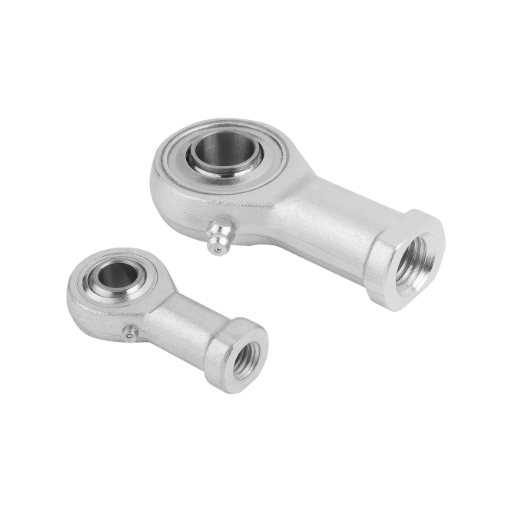
Proper Installation Techniques for Ball Bearings
To ensure peak performance and prolong lifespan, the installation of ball bearings must be done with precision. The first step includes checking the bearing and housing for possible infections because particles as small as dust can cause misalignment and escalate failure. It is critical to use hot and clean, in addition to, lint-free tools, because any motion steam would cause unlimited motion would lead to deformation in the bearing or the area it seats.
Particular care with the mounting tool is critical when fitting the bearing to the shaft, especially to avoid applying stress to the balls and raceways. A hydraulic or mechanical press with a properly sized adapter set provides even loading, which aligns the bearing bias-free. For installations requiring fit interferences of the inner ring, controlled heating that expands the aligning ring for unobstructed covering without mechanical damage, smooth application, can also aid such methods. Induction heating is an example of such aiding gentle heat measures.
After completing the installation, check that both axial and radial alignment are within the tolerances given by the manufacturer and ensure it is correct. Furthermore, use a controlled degree of lubricant, because a lack of lubrication increases friction, while too much can cause overheating or leakage in the system. Following these instructions enables effortless movement and prolongs the lifespan by preventing wear and unexpected failure.
How to Lubricate and Maintain Rod End Bearings
Maintaining an optimal lubrication schedule for rod end bearings is paramount to their longevity, and without the right maintenance, achieving peak performance could invite potential failure at any point. Start with thoroughly understanding what lubricant type is needed, which is most likely suggested by the manufacturer and is dependent on the application conditions. Most experts prescribe greases with adequate viscosity and overcome the lack of anti-wear, corrosion, and bearing load capabilities and additives. Depending on the lubricant system’s temperature and load requirements, either mineral-based or synthetic lubricants can fulfill demands posed by the system’s environment.
Always have a plan when it comes to covering all bases regarding an optimal range of lubricant application. Disposing of old grease calls for scrubbing the bearing surface with a solvent or lint-free cloth to get rid of any chin dust, dirt, or leftover grease that is not attached to the lubricated part. For optimal delivery of lubricant that is trapped in the bearing, a manual grease gun or an automated lubrication system can be utilized. Strike the right balance with under-lubrication and over-lubrication, as the latter can render too much unnecessary heat to be generated while also risking leakage that can significantly risk bearing performance. Use specific volume and interval guidelines alongside the bearing’s grease allotment policies to tailor an optimal schedule for lubricating the components.
The condition of the rod end bearing should be monitored, and regular inspections conducted. Look for wear markings, such as excessive clearance, which may imply contamination or inadequate lubrication, as well as pitting and corrosion. Furthermore, keep track of the temperature during operations and any other sounds that might be issued during movement, as these might suggest that maintenance is required. Set up a maintenance schedule that complements the system’s operational environment and ensures that preventative measures are maintained all the time.
With proper maintenance and lubrication techniques listed above, the rod end bearing performance can be optimized as well as the service life, while operational costs and system downtime are significantly reduced.
Applications of Rod End Bearings in Various Industries
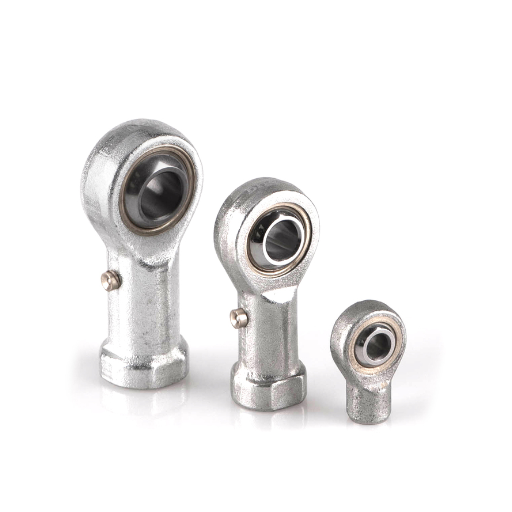
Use in Automotive Systems and Steering Links
Rod end bearings are important features in numerous automotive systems, particularly in steering linkages and suspension components. In these applications, rod end bearings provide articulation and smooth motion with the allowance for misalignment under dynamic loads. Below are five important examples of the usage of rod end bearings in automotive systems:
- Steering Linkages: Rod end bearings are also used in steering linkages, where they serve precision control and dependable transmission of forces from the steering system to the wheels. Their ability to deal with angular misalignment is critical to the maintenance of smooth steering.
- Suspension Systems: These bearings are used in suspension components to connect the parts while protecting the vehicle against the continuous stress of road vibrations and impacts to optimally ride and handle the vehicle.
- Gear Linkages
- Ensuring the proper function of shift linkages, rod end bearings are widely used in gear shifting assemblies for accurate movement alignment, which leads to smooth and efficient transitions of different gears.
- Brake Systems: In some operatory brake assemblies, it is used in some parts to control movements and alignments under heavy mechanical loading to enhance the reliability of braking during operation.
- Clutch Mechanisms: Rod end bearings are very important in the clutch linkage systems since they allow movement with minimum friction, which permits exact engagement and disengagement.
The growing demand for rod end bearings in automotive systems is evident through these examples. Their ability to withstand considerable loads without damage, high wear, and inefficient energy consumption under different environments guarantees the reliability of essential automotive parts over long durations.
Industrial Mechanism and Machinery Applications
Rod end bearings stand out in various industrial mechanisms as they bear high loads while providing angular movement and friction reduction in dynamic systems. These parts are highly critical, especially because of high precision manufacturing techniques and stringent tolerances, which make them useful across different industries. Here are five primary functions of rod end bearings for industrial purposes:
- Robotics and Automation Systems: Rod end bearings are used for articulation and rotational movements in automation systems and robotic arms. They are critical for maintaining performance under repetitive and fast motions, which greatly aids in automated processes.
- Conveyor Systems: It is almost impossible to talk about conveyor belt mechanisms without mentioning rod end bearings. They are used to change direction, alignment, and tension on the conveyor belt, which is essential for proper material handling in industrial production lines, reducing wear and noise.
- Hydraulic Cylinders: Rod end bearings are crucial components of hydraulic actuators for supporting piston rods. They allow for both axial and angular motion. Their durability and ability to withstand pressure environments help improve hydraulic systems.
- Packaging Machinery: Rod end bearings enable packaging machinery components such as sealing jaws, cutting arms, and feeding mechanisms to turn smoothly and accurately, helping maintain precision and consistency throughout the process.
- Textile Machinery” Woven, spun, and knitted equipment performs at its best when knitting, spinning, and weaving. This is where rod end bearings excel, as they provide consistent operational support in high-friction, high-speed, and high-vibration environments.
The Industrial Applications of rod end bearings demonstrate their effectiveness in bearing applications where precision, reliability, and versatility are required. Their sophisticated design is able to bear a multitude of mechanical functions throughout industrial machinery, even under the grueling conditions of these operating environments.
Role in Aircraft and Aerospace Engineering
Most often applied in aircraft and aerospace engineering, rod end bearings ensure motion control is accurate while also maintaining the structural integrity of numerous systems. They are integral in aerospace engineering due to their robust design and ability to function in extreme conditions, making them critical to high-performance aerospace systems. Below are five applications rod end bearings serve in the aerospace engineering sector:
- Flight Reliant Operations: Rod end bearings are used heavily throughout maneuverable spoilers, ailerons, and rudders, where adjustability and smooth ranging motion are critical. They allow for precision alignment and friction-assist maintenance, which is critical to control the direction of the aircraft efficiently.
- Landing Gear Mechanisms: These bearings are widely acclaimed to serve in the landing gears of military and commercial jets. They greatly simplify the processes related to performing shock absorbing and load distribution, thereby allowing plane operation during takeoffs, landings, as well as taxiing to be stable and reliable.
- Engine Linkages: Rod end bearings serve an important function when controlling the linkages associated with the mounting of jet engines. Their strength and toughness enable them to withstand the harsh conditions of strong vibrations, great temperature changes, and immense stress.
- Actuator Systems: The precision of force and motion transmission in Hydraulic and electromechanical actuators is accomplished through the use of rod end bearings. These bearings enhance performance in controlling moved surfaces such as landing gears and other articulating interfaces because they permit a degree of misalignment.
- Spacecraft Structural Components: Rod end bearings have applications in the aerospace industry located beyond the planet. Specifically, they have to withstand the vacuum of space, radiation, and extreme temperature changes during orbital and interplanetary missions due to Spaceborne restrictions on failure.
Every one of these applications shows the aerospace engineering rod end bearings’ use, highlighting the technical aspects why aerospace engineering values these bearings. Reliable, strong, and adaptable, they showcase the reason for holding a bearing’s trust in mission-critical systems.
Frequently Asked Questions (FAQ)
Q: What are rod end bearings, and how do they function?
A: Rod end bearings, also known as joint bearings, are mechanical articulating joints used primarily in applications where a precision articulating joint is required. They consist of a spherical bearing in the eye of the rod, allowing for a wide range of motion in one direction. This makes them ideal for use in cars, tie rods, and other machinery where swivels and adjustments are necessary.
Q: How does a rod-end ball differ from other types of bearings?
A: A rod end ball, or rod end bearing, is specifically designed to manage heavy radial loads and accommodate angular misalignment. Its spherical opening allows it to swivel and adjust, unlike traditional bearings that may only permit rotation around a fixed axis.
Q: What is a male thread in the context of rod end bearings?
A: A male thread refers to the external threaded shaft of a rod end bearing, which is used to connect the bearing to other components. This type of threading allows for secure mating with a female threaded component, providing stability and strength to the assembly, such as in a right-hand thread configuration.
Q: How do right-hand threads differ from left-hand threads?
A: Right-hand threads are the most common type of threading, where the bolt or shaft is tightened by turning it clockwise. In contrast, left-hand threads are tightened by turning counterclockwise. Right-hand threads are typically used in rod end bearings for ease of use and consistency in assembly processes.
Q: What role does a jam nut play in rod end bearing assemblies?
A: A jam nut is used to secure a rod end bearing in position on a threaded shaft. By tightening the jam nut against the bearing, it prevents any unwanted loosening or movement, ensuring that the bearing remains in its desired position, even under stress or vibration.
Q: Why is a clevis used with rod end bearings?
A: A clevis is a U-shaped fastener used to connect the rod end bearing to another component. It allows for easy attachment and detachment while providing the necessary pivot point for the bearing to swivel and compensate for misalignment or movement in the connected structure.
Q: What considerations must be made when selecting rod end bearings for a car?
A: When selecting rod end bearings for a car, it is important to consider factors such as load capacity, the range of motion, the size of the threaded shaft, and environmental conditions. The bearing must be capable of withstanding the forces experienced during operation and provide the necessary movement and adjustment.
Q: How is a rod end bearing used in a cylinder application?
A: In cylinder applications, a rod end bearing is typically used to attach the piston rod to an external component, allowing for smooth, controlled movement. The bearing allows for slight angular adjustments, compensating for any misalignment between the cylinder’s position and the connected mechanism.
Q: What is the significance of a threaded shaft in rod end bearings?
A: The threaded shaft in rod end bearings is crucial for secure attachment to other components. It allows for precise adjustment and can be used with a jam nut to limit movement and maintain the desired position, ensuring the bearing operates effectively.
UCTH213-40J-300 with Setscrew(inch)
CNSORDERNO: Normal-duty(2)
TOGN: UCTH213-40J-300
SDI: B-R1/8
SD: 2 1/2
UCTH212-39J-300 with Setscrew(inch)
CNSORDERNO: Normal-duty(2)
TOGN: UCTH212-39J-300
SDI: B-R1/8
SD: 2 7/16
UCTH212-38J-300 with Setscrew(inch)
CNSORDERNO: Normal-duty(2)
TOGN: UCTH212-38J-300
SDI: B-R1/8
SD: 2 3/8
UCTH212-36J-300 with Setscrew(inch)
CNSORDERNO: Normal-duty(2)
TOGN: UCTH212-36J-300
SDI: B-R1/8
SD: 2 1/4
UCTH211-35J-300 with Setscrew(inch)
CNSORDERNO: Normal-duty(2)
TOGN: UCTH211-35J-300
SDI: B-R1/8
SD: 2 3/16
UCTH211-34J-300 with Setscrew(inch)
CNSORDERNO: Normal-duty(2)
TOGN: UCTH211-34J-300
SDI: B-R1/8
SD: 2 1/8










